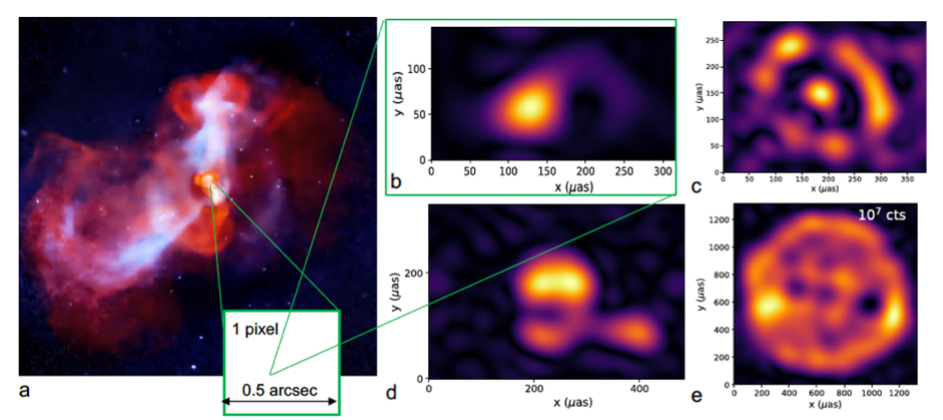If they will ever be built, X-ray interferometers would have a ~10,000 times better spatial resolution than even the most advanced current X-ray telescope. They would be able to image black holes with a telescope system that fits on a single spacecraft. And compared to the current radio images of black holes, this would be in a wavelength range that carries extra information about the violent processes around these objects. At SRON we are working on the first steps towards an X-ray interferometry space mission.
Combining telescopes
By combining multiple telescopes you can obtain a spatial resolution as if the area between them were covered by one enormous dish. Such a setup is called an interferometer. Some sources in the sky are so small or far away that interferometry is the only option to resolve any spatial information. For example, the famous image of the supermassive black hole (SMBH) in galaxy M87 was taken by a combination of radio telescopes covering the entire globe. With X-rays, we would see more interesting features, as X-rays are directly emitted by hot gas surrounding an SMBH.
Because X-rays are blocked by earth’s atmosphere, you would have to build an X-ray interferometer in space. Moreover, because X-rays have a wavelength that is 10 billion times smaller than the radio waves with which the M87 SMBH was observed, the size of the interferometer can shrink by the same factor. Such an interferometer would therefore fit on a single spacecraft, without losing the spatial resolution.

Figure 1. The observational revolution that XRI will bring. a. Actual image of M87 by NASA’s Chandra X-ray observatory. b. Simulation of an observation with 0.1 mas XRI resolution of the M87 SMBH. c. Impression of a reverberation process around a distant SMBH. d. The famous X-ray binary Cygnus X-1. e. The surface of a red dwarf star.





